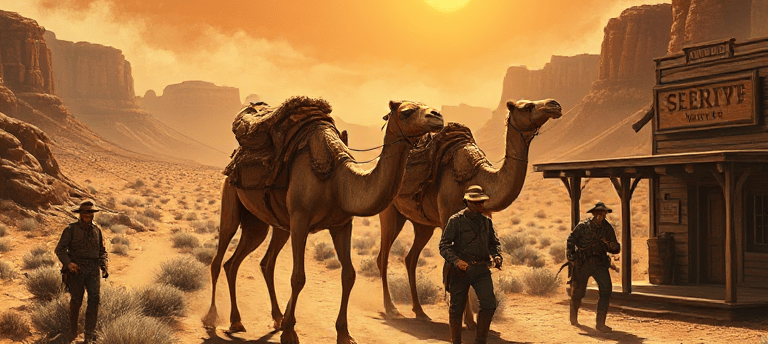The American Camel Corps: When Camels Roamed the West
Discover the intriguing story of the American Camel Corps, a bold 19th-century experiment where camels roamed the deserts of the American West to aid the U.S. Army.
DipVai
1/30/20252 min read


The vast, arid landscapes of the American West were once home to an unexpected sight—camels trudging across the deserts of Texas, New Mexico, and Arizona. This curious chapter in American history, known as the Camel Corps experiment, was a bold attempt by the U.S. Army to use camels for transportation and logistics in the mid-19th century.
Why Camels?
In the 1850s, the U.S. government faced a pressing challenge: how to efficiently transport supplies across the harsh and unforgiving terrain of the Southwest. Traditional pack animals like horses and mules struggled in the desert environment, where water was scarce and temperatures soared.
Jefferson Davis, then Secretary of War and future president of the Confederacy, championed the idea of using camels. Known for their incredible endurance and ability to go long periods without water, camels seemed like the perfect solution.
The Camel Corps is Born
In 1855, Congress approved a $30,000 budget for the purchase of camels. The following year, Major Henry C. Wayne led an expedition to the Mediterranean to procure the animals. They returned to the U.S. with 33 camels, a mix of dromedaries (one-humped) and Bactrian camels (two-humped).
The camels were stationed at Camp Verde in Texas, where soldiers trained to handle and care for the unusual animals. Despite initial skepticism, the camels quickly proved their worth. They carried heavy loads over long distances, moved faster than mules, and required less water.
The Successes and Challenges
The Camel Corps demonstrated its effectiveness during expeditions across Texas and the Southwest. Their resilience in desert conditions was unmatched, and they successfully transported supplies and mail over rugged terrain.
However, camels were not without their problems. They spooked horses and mules, causing chaos in military camps. Their handlers also found them difficult to manage due to their stubborn and unpredictable nature. Despite these issues, the camels remained a valuable asset.
The Decline of the Camel Corps
The outbreak of the Civil War in 1861 marked the beginning of the end for the Camel Corps. With the fall of the Confederacy and changing military priorities, interest in the camel experiment waned. The animals were eventually auctioned off to private owners, circuses, and even mining operations.
Some camels escaped or were released into the wild, where sightings of wild camels persisted for decades. Tales of these "ghost camels" roaming the deserts became part of local folklore.
A Fascinating Legacy
Although the Camel Corps was ultimately short-lived, it remains a fascinating chapter in American history. The experiment demonstrated the willingness of military leaders to think creatively and adapt to the challenges of a vast and diverse landscape.
Today, the story of the American Camel Corps lives on in museums, historical markers, and the imaginations of those captivated by this unlikely tale of camels in the Wild West.
Get in touch
itsusdipvai@gmail.com
